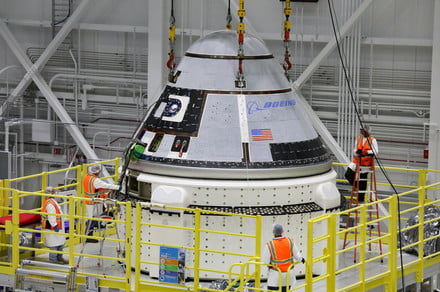Following Boeing’s failed orbital flight test of its Starliner capsule in December, NASA has announced it has produced a list of 61 “corrective actions” which Boeing will follow to ensure the Starliner can fly successfully in the future. The agency will also be initiating an Organizational Safety Assessment, to check for underlying issues with Boeing’s processes.
The actions suggested by NASA’s review board include steps to fix the specific software issues that failed to function properly during the orbital flight test, which included a problem with the timing during the launch process and a problem with the service module de-orbit burn while returning to Earth. The actions will also address how software testing is performed and how Boeing’s software and hardware teams work together.
As an example, part of the Starliner software had four “logical conditions” which represent different ways the software could operate. However, not all four of the conditions were tested. In the future, Boeing has committed to testing all logical conditions in its software. Boeing also acknowledged that it had delegated too much authority to the software board and that software changes should have gone to the higher engineering board for approval.
NASA announced it will also be adding a focused software lead role, embedding more software experts in the Boeing team, and strengthening its Boeing oversight team.
Boeing performed its own audit of its software testing process, which identified 49 “gaps in testing.” John Mulholland, vice president and manager of Boeing’s CST-100 Starliner Program, stressed this did not mean that there were 49 errors in the code, but rather 49 places in which testing was not sufficiently thorough to identify potential errors.
NASA also officially recognized the problems that occurred during the test flight represented a “high visibility close call.” Douglas Loverro, associate administrator of NASA’s Human Exploration and Operations Mission Directorate, acknowledged that “we could have lost the spacecraft at two points during the mission” but also emphasized that the designation “is the lowest level of call, so it’s not in the category of mishaps. It’s in the close call category. We can all agree that this was a close call.”
As for the future of the Starliner, Loverro said he didn’t yet know if there would be a second uncrewed test flight of the Starliner. He did say that Boeing will come back to NASA with a plan for how it will address the issues, and NASA will evaluate the plan before deciding whether another test flight is necessary
The review process and improvement are “going to get us back flying with the best possible spacecraft, as our astronauts don’t deserve anything less,” a Boeing representative said.

